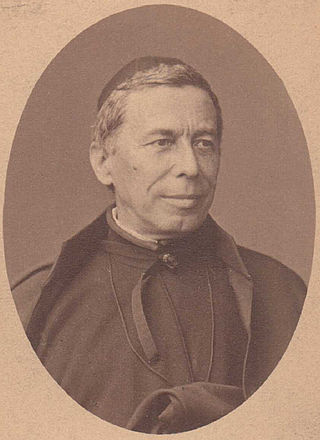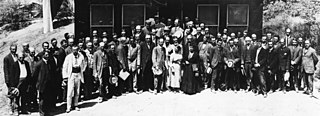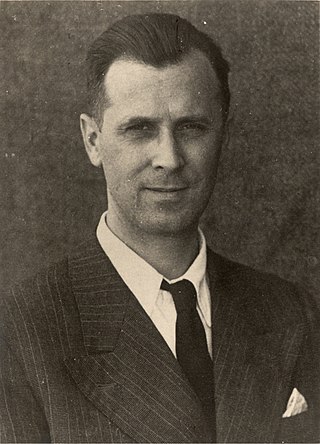
Angelo Secchi was an Italian Catholic priest, astronomer from the Italian region of Emilia. He was director of the observatory at the Pontifical Gregorian University for 28 years. He was a pioneer in astronomical spectroscopy, and was one of the first scientists to state authoritatively that the Sun is a star.

The Vatican Observatory is an astronomical research and educational institution supported by the Holy See. Originally based in the Roman College of Rome, the Observatory is now headquartered in Castel Gandolfo, Italy and operates a telescope at the Mount Graham International Observatory in the United States.

The University of Catania is a university located in Catania, Sicily. Founded in 1434, it is the oldest university in Sicily, the 13th oldest in Italy, and the 29th oldest university in the world. With a population of over 60,000 students, it is the main university in Sicily.

The Asiago Astrophysical Observatory is an Italian astronomical observatory owned and operated by the University of Padua. Founded in 1942, it is located on the plateau of Asiago, 90 kilometers northwest of Padua, near the town of Asiago. Its main instrument is the 1.22-meter Galilei telescope, currently used only for spectrometric observations.

Merate is a municipality of 14,872 inhabitants in the province of Lecco, in the northern Italian region of Lombardy. It is served by Cernusco-Merate railway station.

The Astronomical Observatory of Capodimonte is the Neapolitan department of Istituto Nazionale di Astrofisica, the most important Italian institution promoting, developing and conducting scientific research in the fields of astronomy, astrophysics, and space science.

The Observatory of Turin is an astronomical observatory owned and operated by Italy's National Institute for Astrophysics. It is located on the top of a hill in the town of Pino Torinese near Turin, in the north Italian Piedmont region. The observatory was founded in 1759. At Pino Torinese, several asteroid discoveries were made by Italian astronomer Luigi Volta in the late 1920s and early 1930s. The asteroid 2694 Pino Torinese was named after the observatory's location.

The Brera Observatory is an astronomical observatory in the Brera district of Milan, Italy. It was built in the historic Palazzo Brera in 1764 by the Jesuit astronomer Roger Boscovich. Following the suppression of the Jesuits by Clement XIV on 21 July 1773, the palace and the observatory passed to the then rulers of northern Italy, the Austrian Habsburg dynasty.

The Astronomical Observatory of Rome is one of twelve Astronomical Observatories in Italy. The main site of the Observatory is Monte Porzio Catone. Part of the Istituto Nazionale di Astrofisica since 2002.

The Pistoia Mountains Astronomical Observatory, also known as the San Marcello Observatory and the Pian dei Termini Observatory, is an astronomical observatory in San Marcello Piteglio, Tuscany, central Italy.

Annibale Riccò was an Italian astronomer.
Monte Mario is the hill that rises in the north-west area of Rome (Italy), on the right bank of the Tiber, crossed by the Via Trionfale. It occupies part of Balduina, of the territory of Municipio Roma I, of Municipio Roma XIV and a small portion of Municipio Roma XV of Rome, thus including part of the Quarters Trionfale, Della Vittoria and Primavalle.

Rocca di Papa is a small town and comune (municipality) in the Metropolitan City of Rome, Lazio, Italy. It is one of the Castelli Romani about 25 kilometres (16 mi) southeast of Rome on the Alban Hills. It is close to the other communes of Velletri, Rocca Priora, Monte Compatri, Grottaferrata, Albano and Marino. It is the center of the Regional Park known as the "Parco Regionale dei Castelli Romani".

Monte Porzio Catone is a comune (municipality) in the Metropolitan City of Rome in the central Italian region of Latium, located about 20 kilometres (12 mi) southeast of Rome, on the Alban Hills.

The National Institute for Astrophysics is an Italian research institute in astronomy and astrophysics, founded in 1999. INAF funds and operates twenty separate research facilities, which in turn employ scientists, engineers and technical staff. The research they perform covers most areas of astronomy, ranging from planetary science to cosmology.

Foro Italico is a sports complex in Rome, Italy, on the slopes of Monte Mario. It was built between 1928 and 1938 as the Foro Mussolini under the design of Enrico Del Debbio and, later, Luigi Moretti. Inspired by the Roman forums of the imperial age, its design is lauded as a preeminent example of Italian fascist architecture instituted by Mussolini. The purpose of the prestigious project was to get the Olympic Games of 1940 to be organised by fascist Italy and held in Rome.
Balduina is an urban area that belongs to the Municipio XIX of the comune of Rome, Italy, and to the fourteenth borough of the city,. Situated at 139 metres above sea level on the southern side of Monte Mario, Balduina is the highest part of Rome. The population is 42,000.

The Cima Ekar Observing Station is an astronomical observatory on the crest of Cima Ekar, a mountain ridge located approximately 4 kilometers southeast of and 350 m higher than the town of Asiago, Italy.
The church of Sant'Egidio in Borgo, ...a Borgo, or ...in Vaticano, is a Roman Catholic oratory in Vatican City dedicated to Saint Giles.

Attilio Colacevich was an Italian astronomer.


















